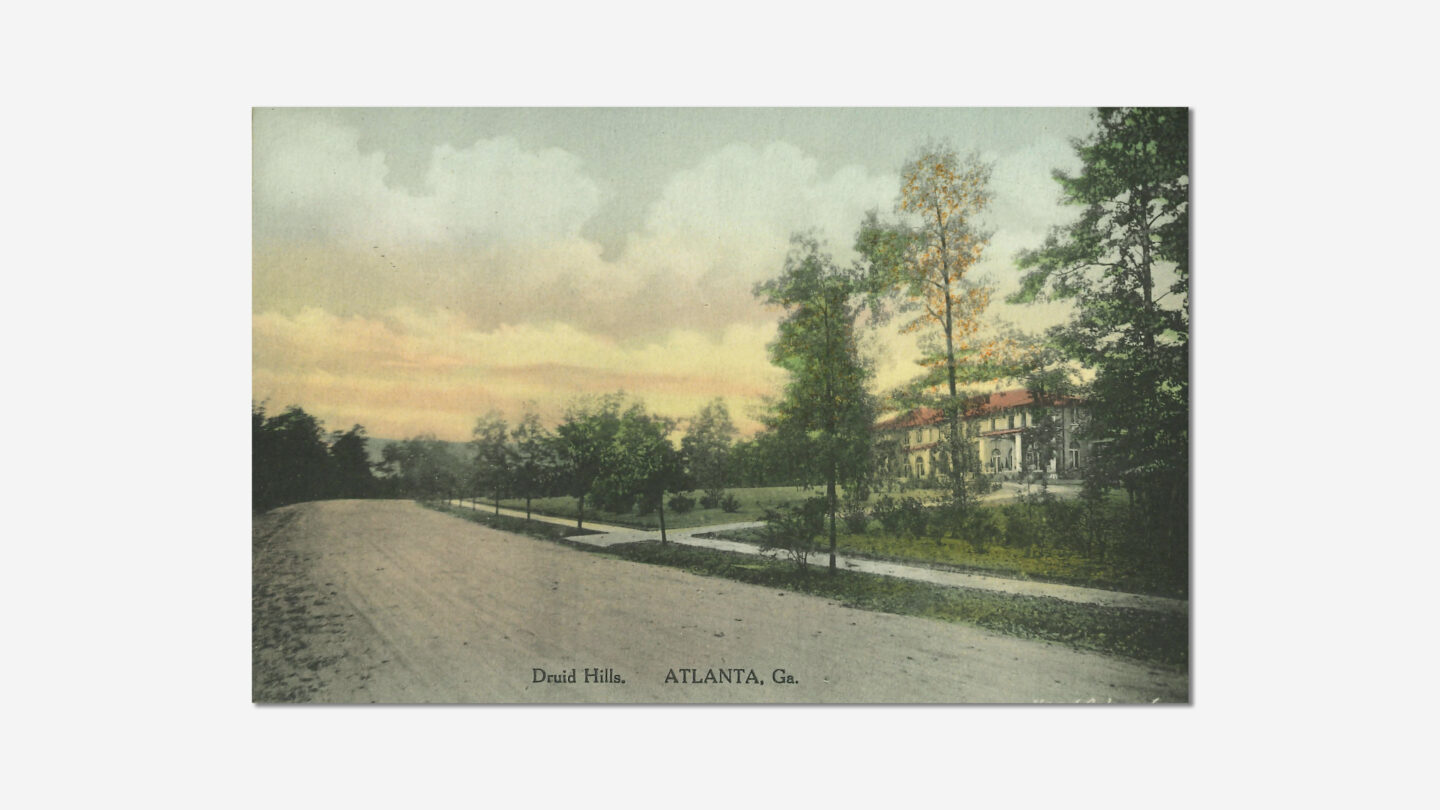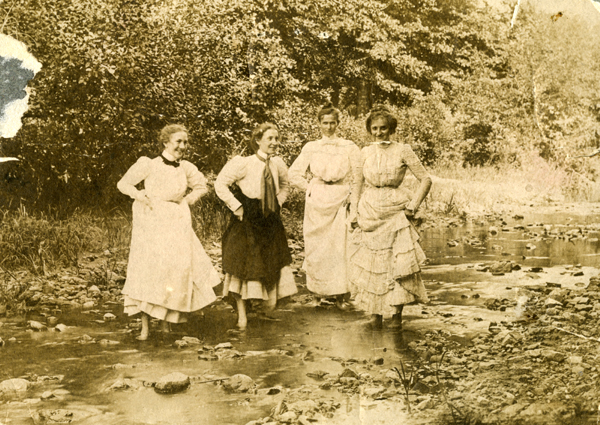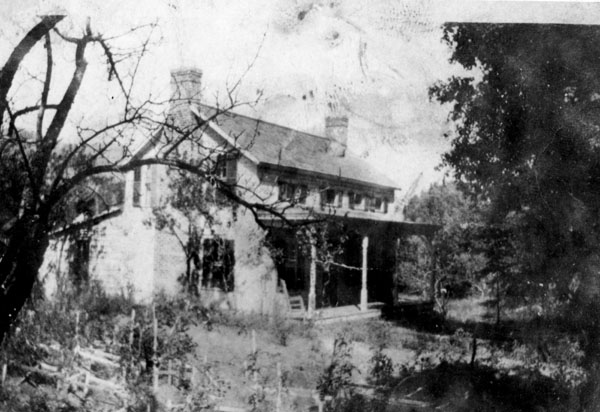
Kenan Research Center at Atlanta History Center
Editor’s note: This blog post is part of a series exploring the history behind popular Atlanta street names. Is there a street name that you want to know more about? E-mail us at stories@atlantahistorycenter.com, and let us know.
Ancient shamans. Magical elixirs. Taxidermized animal heads. Street names in Atlanta evoke rich imagery. For every straightforward “Second Street” in Atlanta, there’s a road with a more unconventional name that invites us to wonder about the story behind it.
Druid Hills, for example, reflects the romantic imaginations of its early founder. The neighborhood was named by its developer, Joel Hurt. The area reminded Hurt of Druid Hills Park in Baltimore. Like Druid Hills Park, Atlanta’s Druid Hills has beautiful rolling hills similar to those in which the Celtic Druids practiced religion, medicine, and magic in ancient Britain.
Ponce de Leon Avenue was once the unnamed road leading to John Armistead’s property in the years after Atlanta burned in the Civil War. One day in 1871, an ailing rail worker, who had been laying rail near Armistead’s property, drank from the springs and claimed he was cured. Soon, a physician, Dr. Henry Wilson, dubbed the waters “Ponce de Leon Springs” for their alleged curative properties in honor of the Spanish explorer, Juan Ponce de Leon, who searched for the fabled Fountain of Youth. Atlantans began traveling to and from Armistead’s estate daily via Ponce de Leon Avenue to drink and buy the water.
Today, Ponce City Market sits where the natural springs used to be.

Jeanette Jones (Mrs. McSwain); Viola Jones (Mrs. Clavin Stanford); Mrs. John Whipple; and Mary C. Logan wade in the Ponce de Leon Springs. Atlanta History Photograph Collection, Kenan Research Center at Atlanta History Center.
The stories behind Druid Hills and Ponce de Leon are rooted in myth—stories with symbolic significance that helped people of old explain the world around them—but some street names are part of lore that was created at some point during Atlanta’s own coming-of-age.
For instance, Buckhead Avenue and the neighborhood Buckhead get their name from the anecdotal exploits of a 19th century Atlanta man. According to legend, farmer Henry Irby killed a buck deer and placed the taxidermized head on the front of his tavern. This buck head became an easy place marker for those traveling nearby. Eventually people began to refer to the area as “Buckhead.” According to Wright Mitchell, president of the Buckhead Heritage Society, the story is generally true, but some of the details—such as the fact that Irby’s building was a tavern or that Irby himself killed the deer—may be false. The buck may have been shot by a man named John Whitley. According to tradition, descendants saved both Whitley’s pioneer cabin and the rifle that shot the deer. Either way—Irby or Whitley as the deerslayer—the buck was shot near a spring whose waters now run through Atlanta History Center.

The House in which the DeFoors were killed was demolished after their deaths. Atlanta History Photograph Collection, Kenan Research Center at Atlanta History Center.
Martin DeFoor, an early settler of Atlanta and the namesake for DeFoor Avenue and DeFoors Ferry Road, was a ferry operator on the Chattahoochee River. Here, the origin of the street names themselves aren’t the mystery, but the namesake is subject of one. DeFoor became a Georgia true-crime story when he and his wife were hacked to death with an axe in their own home in 1879. To this day, the DeFoors’ murder remains unsolved, and some believe Susan DeFoor’s ghost haunts the building where the DeFoor house once stood.
These are just four stories connected to Atlanta’s many street names, but they give us a rich glimpse into both the minds of our city’s founders and the richness of Atlanta’s lore. The next time you’re looking for a bit of magic, mystery, or the secret to eternal life, look no further than the street you’re walking down—you might find it.



